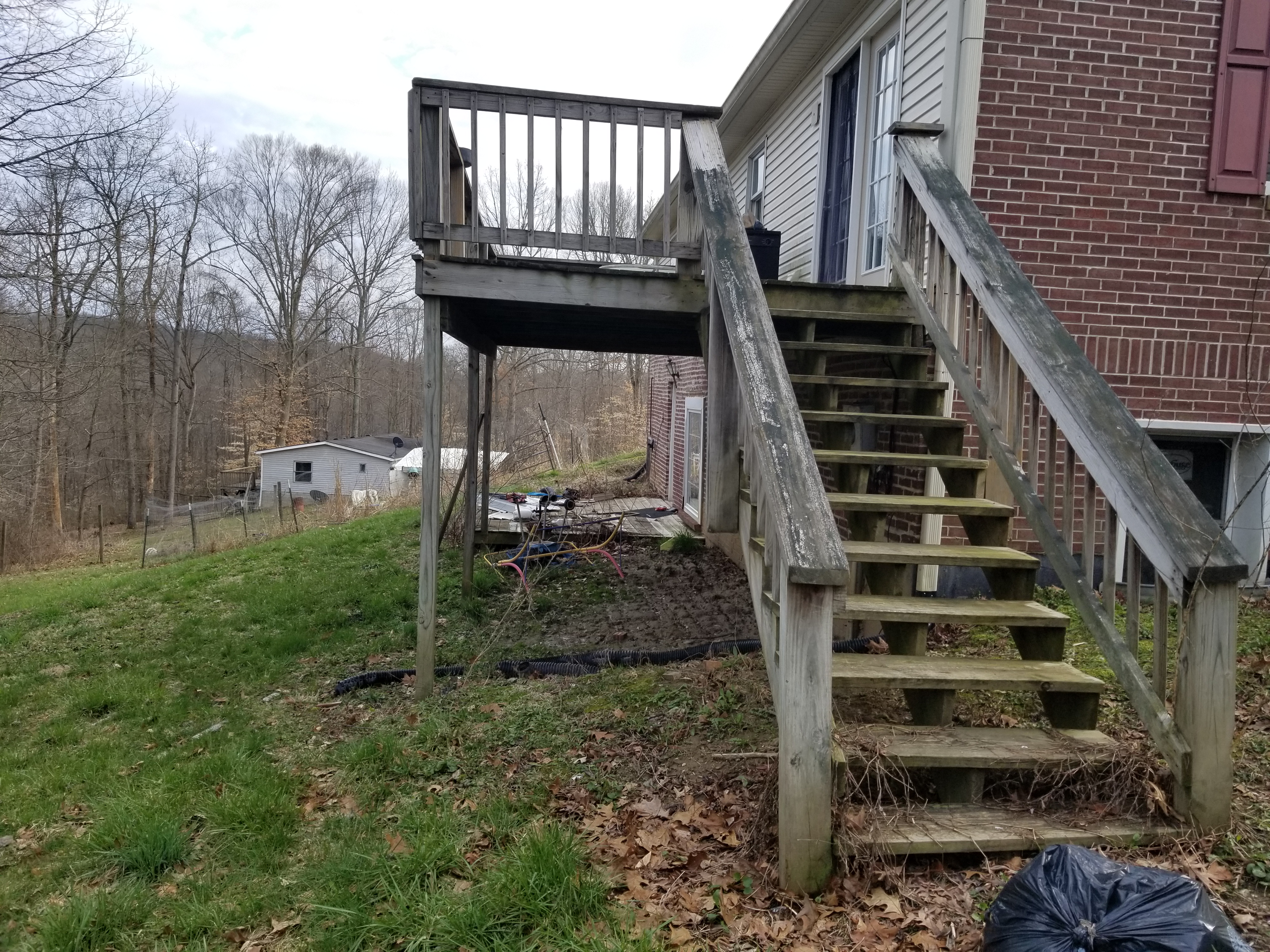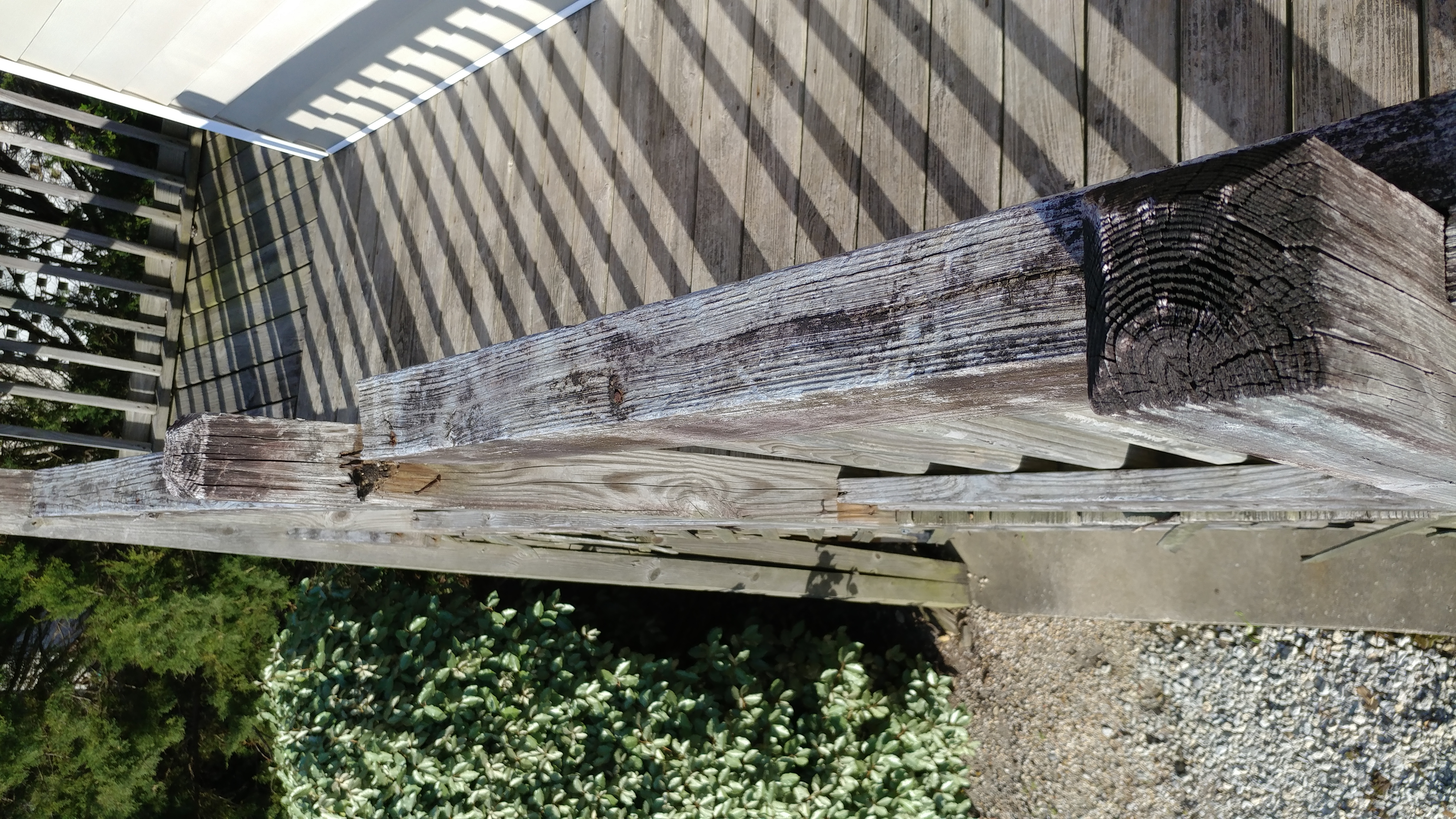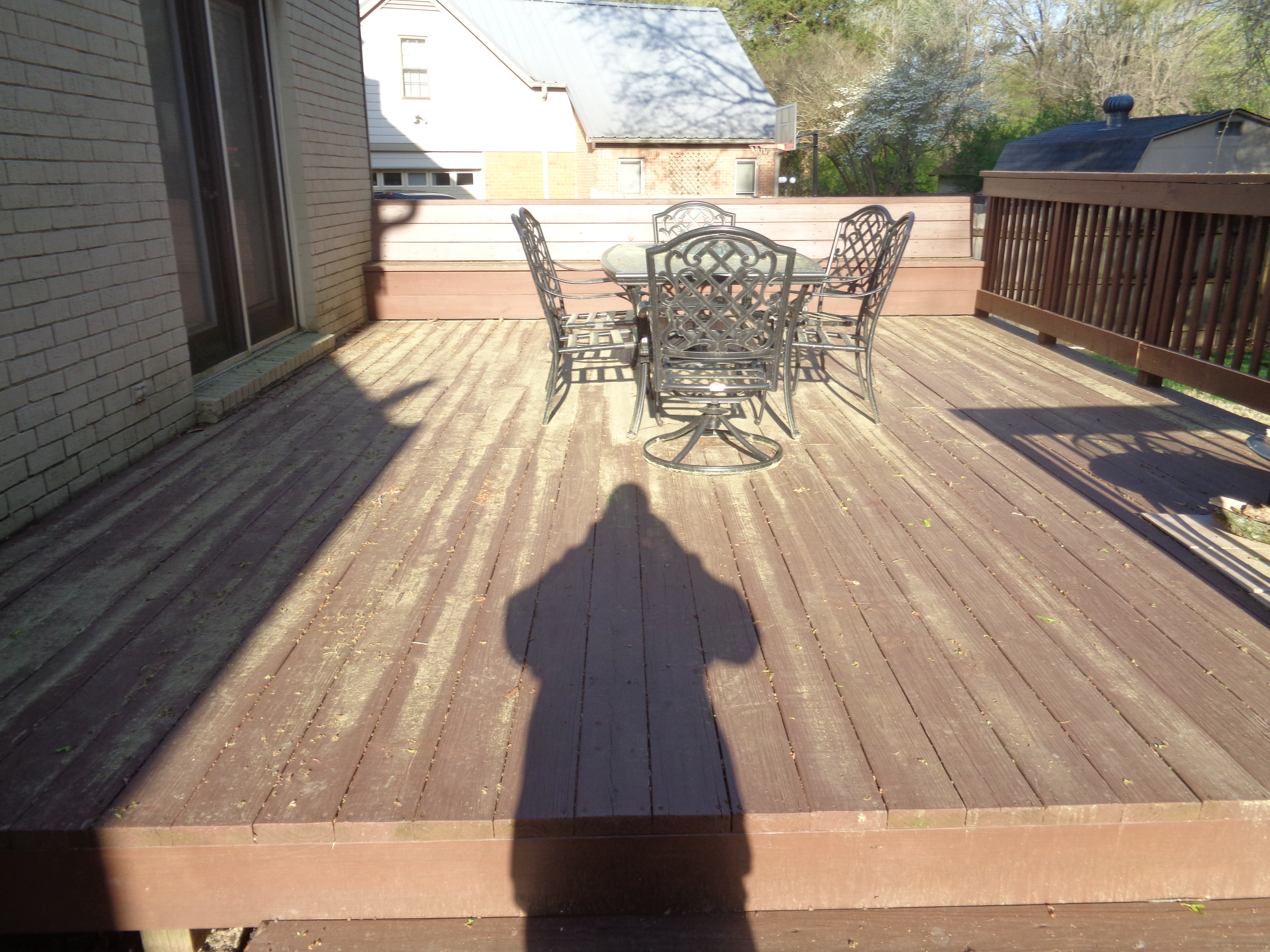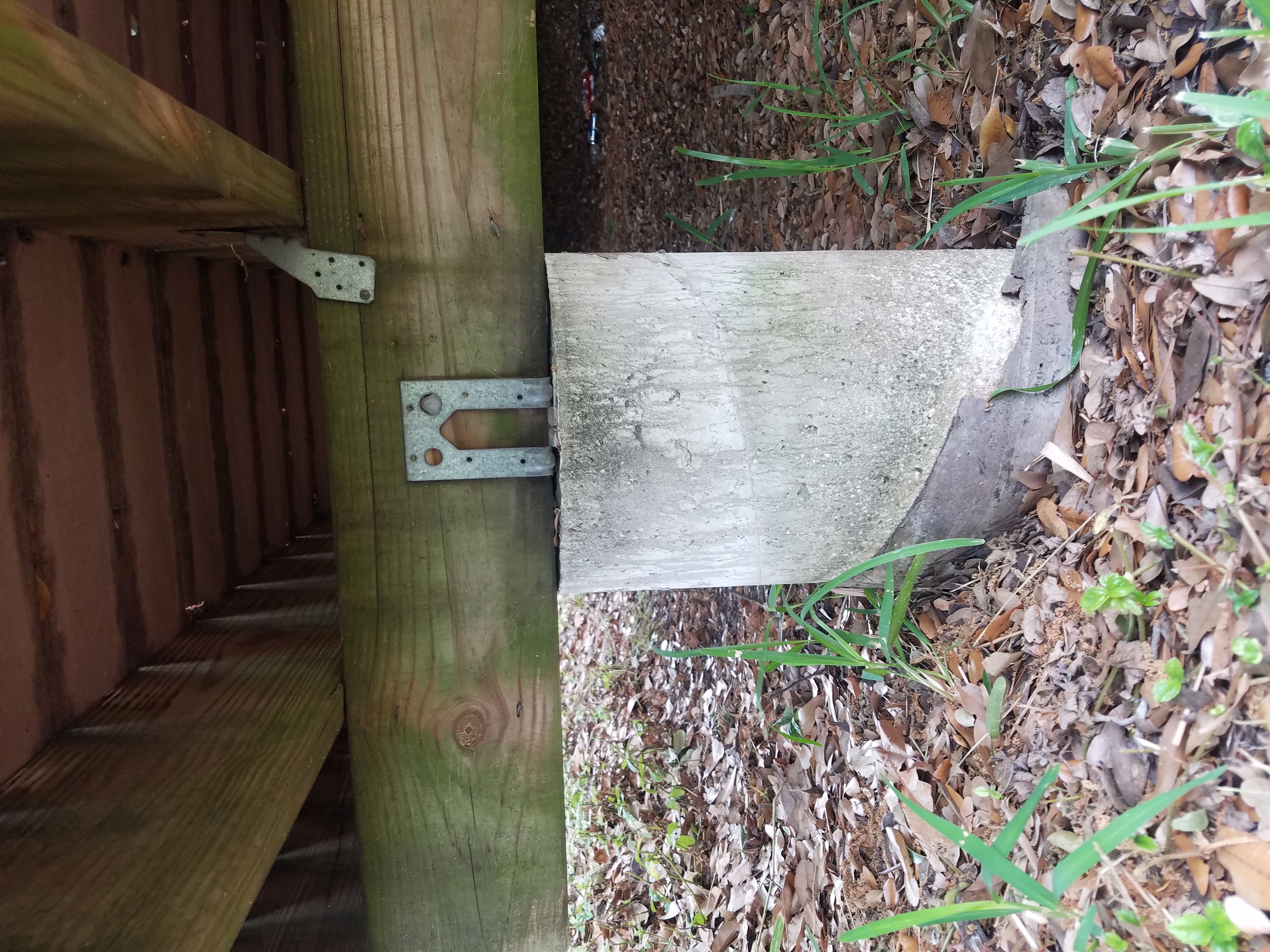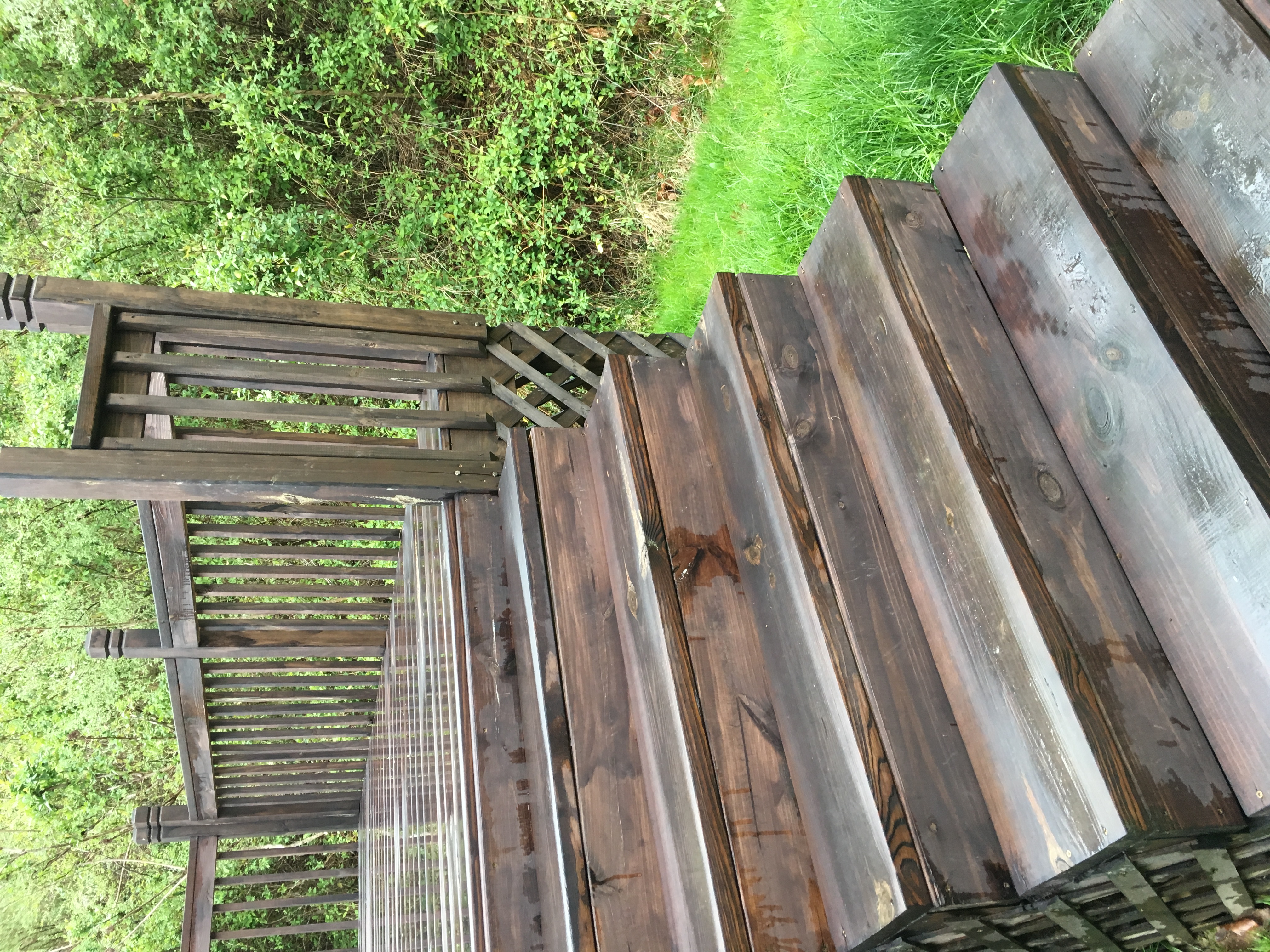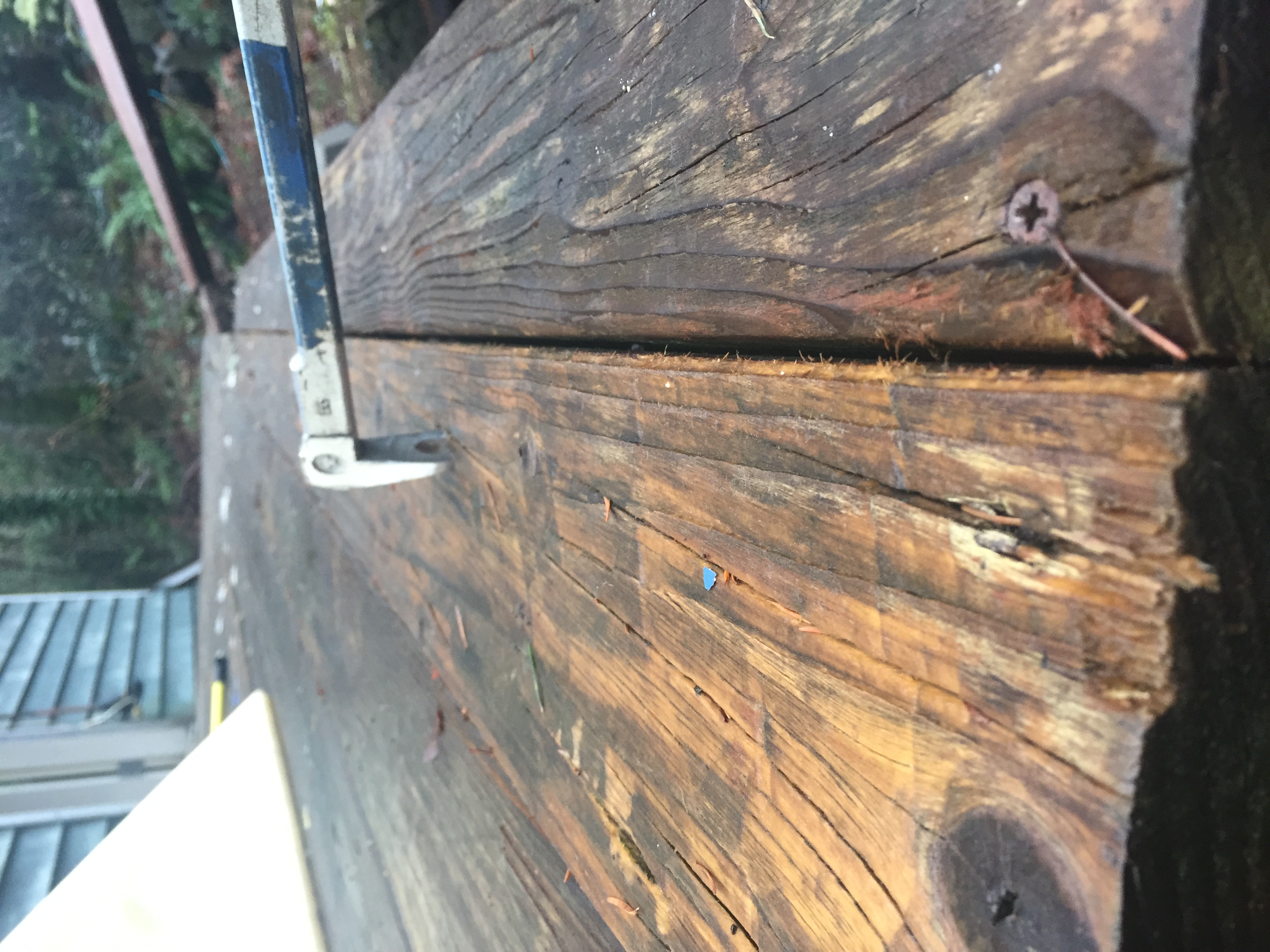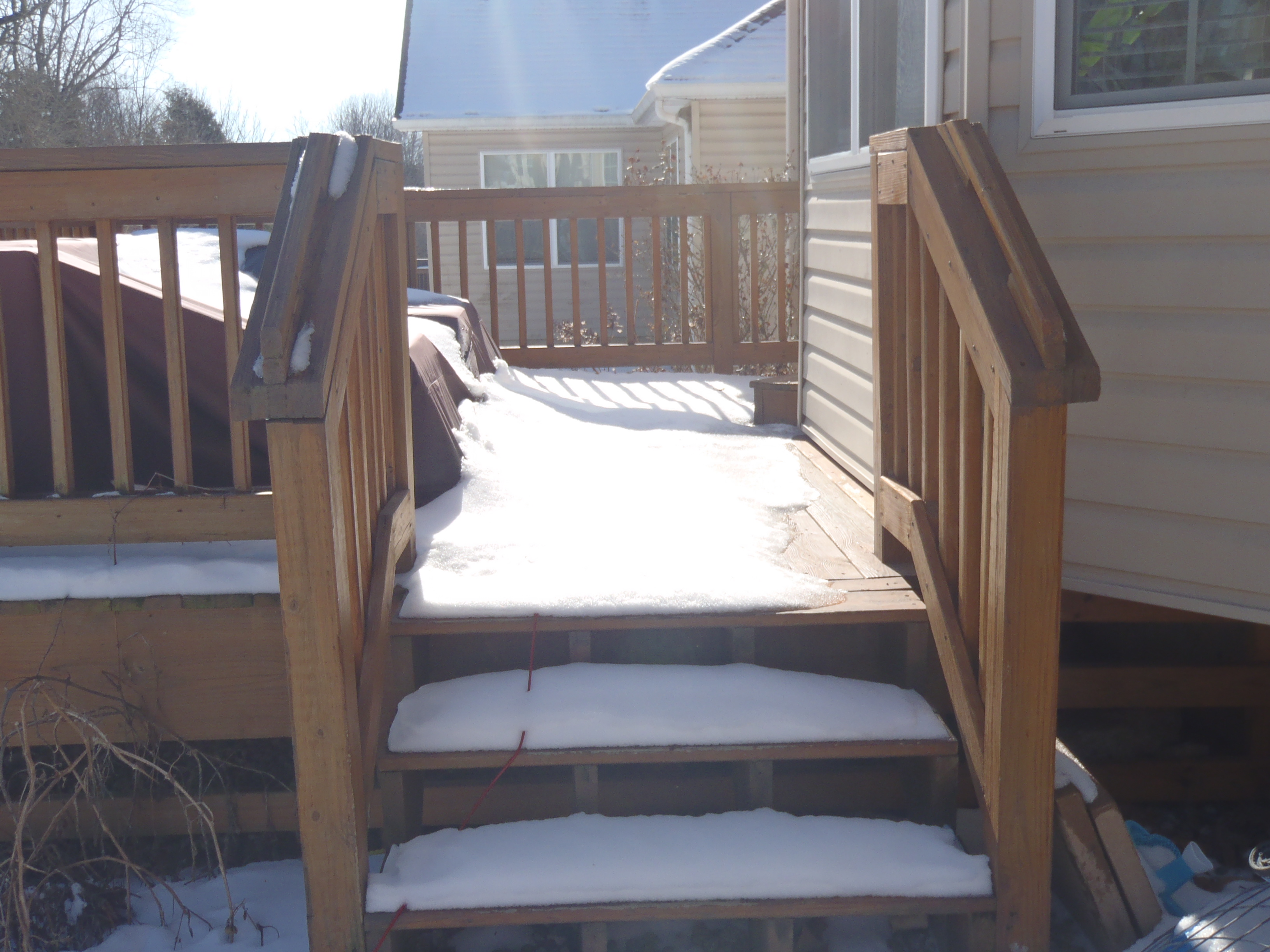The deck, built in 2009 per the home owner is supported by 6x6 posts that are not braced. The railings are not anchored securely and the ballusters are not evenly spaced. There is no graspable handrail. The handrail is 2x6 lumber. I recommend having the deficiency(s) repaired by a qualified and experienced professional.
I read an illustrated article about deck inspections. The first part that really got my attention is how the load is often at the outside railing. This immediately rang a bell. In many decks that I have seen and stained often aren’t cross braced.
This essay is about Deck Receptacles and safety. It is clear that as an inspector we may not be able to quoit electrical codes for a home inspection, but we need to stay current on the changes that take place inside those codes so as to better serve our clients. Changes such as From The 2005 To the 2008 NEC. As of 2005 the NEC required at least one outdoor receptacle in the front and in the rear of the house, not more than 6 feet from the ground. As of 2008, the NEC added the following requirement: "Balconies, decks and porches that are accessible from inside the dwelling unit shall have at least one receptacle outlet installed within the perimeter of the balcony, deck or porch. The receptacle shall not be located more than 6 feet (2m) above the balcony, deck or porch surface. "Reason for the 2008 Code Supplement:Extension cords are likely to be used to run appliances on large balconies, decks and porches (greater than 20 feet square) if receptacles are not installed at these locations. Extension cords can be dangerous, especially if used outdoors and in wet conditions. The dangers associated with extension cords are structure fires and trip hazards.
THIS IS A SET OF STAIRS TO AN ELEVATED DECK. THESE STAIRS SAFELY ALLOW PEOPLE TO MOVE FROM GROUND LEVEL TO THE LEVEL OF THE DECK. THE STAIRS CONSTRUCTION WILL CONSIST OF THE STINGERS, THE DECK BOARDS AND A HANDRAIL.
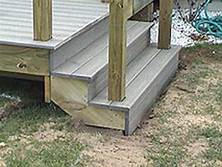
The image i used was Deck child safety. this shows that balusters have to have a max spacing of 4in sphere and the step spacing of 6in sphere. this requirements help prevent children from becoming stuck or falling through the deck balusters.
Dilapidated Railing
Not only is the railing on this deck dilapidated, the whole deck is deemed unsafe. If a 200 pound person leaned against this railing, they’d splat on the driveway below. Where the railing was attached to the post in this picture, the fasteners had completely corroded. I barely pushed on it and the railing detached from the post.
The entire deck is weathered extensively with spots of heavy dry rot. The rails are not smooth and a couple of people got splinters in their hands. The decking is also splinter inducing and in numerous places, there are nail pops and boards are coming up.
This house is a rental at the beach. This house could be used as a lab to demonstrate numerous failures. We called the county inspector who came out and deemed the whole structure uninhabitable. We had to move to another house.
Deck Collapse
With the estimate that only 40% of decks are safe, then it should be imperative that a home inspector make a thorough inspection of any deck connected to the house. On home repair mission trips, I always seemed to get jobs that revolved around porches and decks. Usually either the porch roof or the deck or both were pulling away from the home. So, I have had a lot of experience with unsafe decks and know what to look for in general.
Recently, I was walking on a porch that felt unsturdy. Sure enough, the headers were not connected to the pillars and were twisting. The headers were connected to each other haphazardly and didn’t do so supported by the pillars. In one spot there was 4x4 post that half had sheared off where the header sat on the post. There was also shoddy work to shore up the deck and even that work was failing. If this porch deck was carrying much of a load, I fear it could easily collapse.
This is a picture of a common deck in my area. They are usually low and surrounded by lattice work. This building style makes it extremely difficult for me to determine the soundness of the construction. It leaves me to generally determine physical condition of the wood and railings.
The picture depicts a deck with minimum grade clearance of untreated wood. The question is clearly why anyone would build a deck with ANY untreated wood as to allow rapid decay? Any deck with untreated wood should be immediately corrected to pressure treated lumber.
I chose write about pool safety. Portable spas are exempt from pool safety requirements. Pool safety is serious especially with children under 5 years of age. Children between 1-3 mainly boys are known to have more pool injuries or drownings in California, Florida, and Arizona. Having a barrier around a pool that meets all safety regulations is the best way to prevent injuries and drownings of children under 5 years old.
I traveled to the church next door to my apartment. I found a few items of concern when I looked underneath the decking, which seemed sound from the top. I found that many fasteners were missing in places they should have been; creating bowing in places that it should not had there been the correct number installed in the first place. Only placing one screw in the joist connectors allowed for this deck to shift as seen in the picture. I believe had there been more in place, this would not have occurred.
An evaporative cooler, or swamp cooler is a device used to cool the air using the evaporation of water. It cools by drawing air in and passes over water-soaked pads and as it evaporates, may cool the air 15-40 degrees. Cool air is directed towards open windows and warm air expelled through them. Evaporative coolers are a great way to bring fresh air into the home unlike traditional ac systems, which circulates the same air over and over again.
The stairs to this deck pose a major risk to the occupants and should be called out in the inspection report. Even though the deck is nearly 5 foot from grade, there are no handrails on either side of the stairs. In addition, the top riser is 4 inches in height different than all other risers which is a trip hazard.
Should an inspector call out the absence of a receptacle located on the perimeter of a deck? The answer, I believe, is yes and no. Yes, the 2008 NEC requires a receptacle within the perimeter of decks, but what if the deck was constructed before 2008 or the deck was constructed by the homeowner who has no electrical experience or knowledge of the NEC? At the very least, I believe the home inspector should inform the buyer or home owner of the need for a receptacle and suggest one be installed by a licensed electrician.
A deck is a large, raised wooden floor attached to the back of a house and contained by a perimeter railing for safety. Decks are rarely covered, and usually have a rough or informal look that is not integrated with the rest of the house’s design. They are typically intended to be locations for large outdoor social gatherings, such as barbecues and birthday parties. Access to the deck may be from the ground through a stairway, or from the house through a back door, or both.
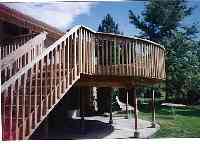
A moisture meter is a device designed to measure the moisture content of various building materials, such as roofing, siding, insulation, drywall, plaster, wood, tile and fiberglass. Structural and safety hazards, such as mold, rot and decay are all potential consequences of elevated moisture levels in these materials. An inspector can use a moisture meter to locate moisture that would not otherwise be apparent.
An interesting article describes the innovation behind a class of porous, solid insulating material called Aerogel. Aerogel is 90% air which gives it a R-value of 10-30 compared to regular fiberglass insulation that is rated 3.1. Since it is a poor conductor of heat, lightweight, extremely high in surface area and strong, it has the capability to create an extremely insulated house. However, like all new technology, it is very expensive and therefore you will not likely see it in the mainstream market until several years have past.
We were hired to inspect this deck of 1983 built house. The deck was totally deteriorated/delaminated because it wasn’t made of pressure treated neither it was weather protected or stained after. We recommend to replace all the rotten parts of this deck.
This photos gives a stairway-view of a wooden deck on the back of a house. Note that the deck stair rails include an add-on grab bar on the 2x6’s that top the rest of the guard railing around the deck. The 2x6’s on the rest of the guard-railing are not adequately graspable and should be smaller in cross-section for gripping purposes.
The article “Deck Receptacles” indicates that there are two NEC Standards that are applicable for inspecting decks with regard to the presence, or lack of, 15-20 Amp 120/240V outdoor receptacles. The 2005 NEC standard requires at least one outdoor receptacle in the front and back of the house that is not located more than 6 1/2 ft above the ground. The 2008 NEC Standard supplements that from 2005, stating that for decks accessible from the house, should have at least one outdoor receptacle within the 2005 mounting height limit. In some cases only one outdoor receptacle is required meeting both the 2005 and 2008 Standards.
